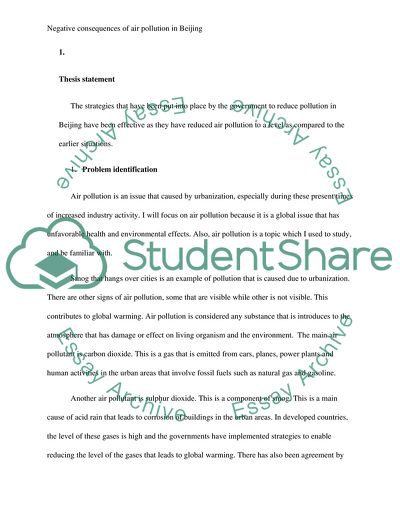Cite this document
(Negative Consequences of Air Pollution in Beijing Case Study - 1, n.d.)
Negative Consequences of Air Pollution in Beijing Case Study - 1. Retrieved from https://studentshare.org/environmental-studies/1881675-identify-a-problem-caused-by-urbanization-and-evaluate-the-effectiveness-of-two-solutions-which-have-been-implemented-to-combat-the-issue-you-should-focus-on-one-area-of-the-world-use-data-to-support-your-argument
Negative Consequences of Air Pollution in Beijing Case Study - 1. Retrieved from https://studentshare.org/environmental-studies/1881675-identify-a-problem-caused-by-urbanization-and-evaluate-the-effectiveness-of-two-solutions-which-have-been-implemented-to-combat-the-issue-you-should-focus-on-one-area-of-the-world-use-data-to-support-your-argument
(Negative Consequences of Air Pollution in Beijing Case Study - 1)
Negative Consequences of Air Pollution in Beijing Case Study - 1. https://studentshare.org/environmental-studies/1881675-identify-a-problem-caused-by-urbanization-and-evaluate-the-effectiveness-of-two-solutions-which-have-been-implemented-to-combat-the-issue-you-should-focus-on-one-area-of-the-world-use-data-to-support-your-argument.
Negative Consequences of Air Pollution in Beijing Case Study - 1. https://studentshare.org/environmental-studies/1881675-identify-a-problem-caused-by-urbanization-and-evaluate-the-effectiveness-of-two-solutions-which-have-been-implemented-to-combat-the-issue-you-should-focus-on-one-area-of-the-world-use-data-to-support-your-argument.
“Negative Consequences of Air Pollution in Beijing Case Study - 1”. https://studentshare.org/environmental-studies/1881675-identify-a-problem-caused-by-urbanization-and-evaluate-the-effectiveness-of-two-solutions-which-have-been-implemented-to-combat-the-issue-you-should-focus-on-one-area-of-the-world-use-data-to-support-your-argument.


